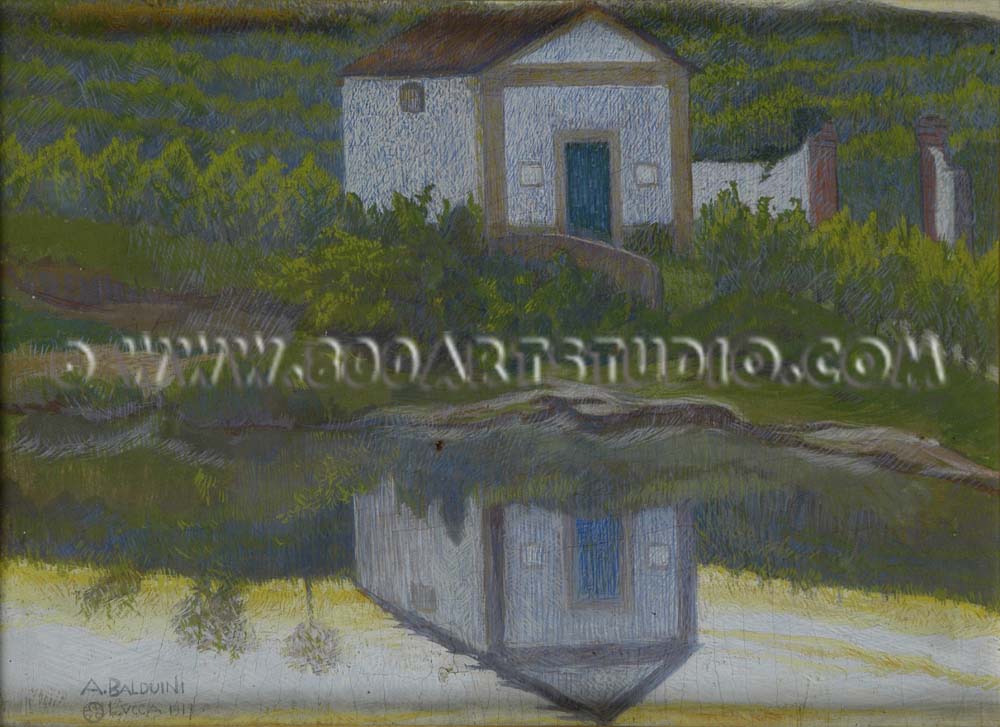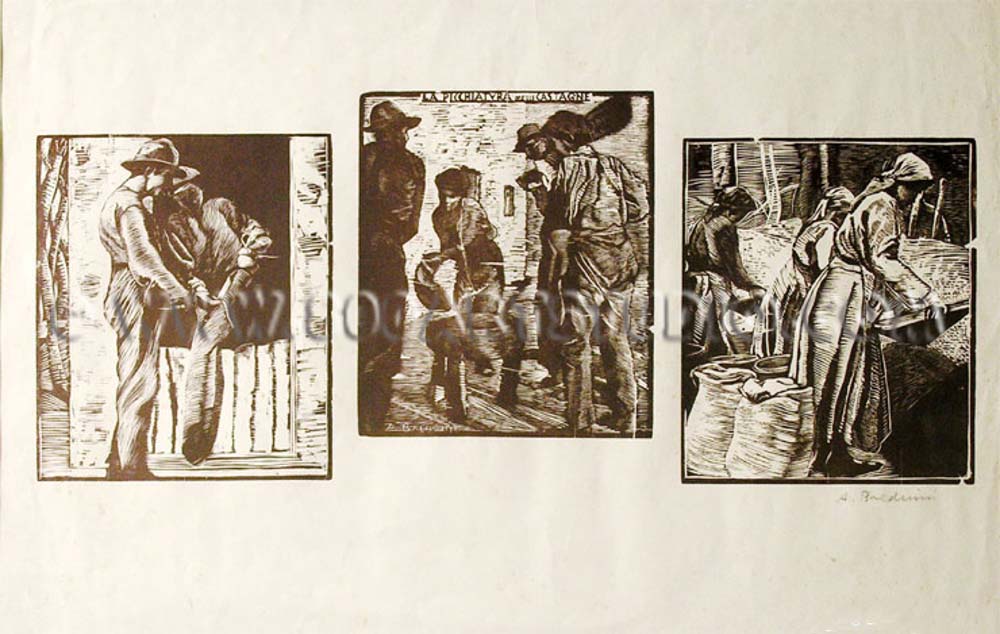Adolfo Balduini was born in Altopascio in 1881. The family emigrated to Buenos Aires, Argentina when he was twelve years old. It was there that the boy spent his youth and began studying art at the Vieja Sciedad Estìmulo de Bellas Artes under his teachers Reinaldo Giudici and Angel della Valle who in their turn had studied in Italy.
When he was twenty he returned to Italy to enrol at the Scuola Libera del nudo di Firenze and in 1905 he started studying at the Accademia delle Belle Arti di Roma, but at the end of the year he had to go back to Buenos Aires where he remained until 1909. He then returned to Italy where he was readmitted to the Scuola Libera del nudo a Firenze. It was in this same year that Balduini got married to Amalia Salvi and moved to the small town of Barga, his wife’s town. With this change of scene his art entered a prolific period.
In 1912 he had to return to Argentina where he remained there for two years. It was in this period that he took part in the Esposicìon National de l’Arte with two works. Returning to Italy, from 1915 to 1918 he served military service at the military hospital in Lucca. It was in these years that he concentrated on oil paintings and bas-relief works in wood. The theme of the works in both these techniques is rural with subjects inspired by peasant life. On the contrary he used woodcut engraving for subjects of social and industrial life.
When the war was over, in 1922, Balduini decided to move to Sommocolonia, a hamlet in the hillside north of Barga. In this new home, a place of great peace and tranquillity, his love of rural type subject matter underwent a further development and he showed at two exhibitions, one in Rome and the other in Leghorn. In 1927 he participated in a show of Tuscan woodcut engravings in Rome and at the Esposizione Internazionale di Belle Arti in the town of Fiume. He organised a show of work by Barga artists in 1929, in Barga, where he won numerous official awards. In 1930 he was accepted to show at the Venice Biennial with a bas-relief. In 1932 he sent some woodcuts to Buenos Aires to the Esposizione della Xilografia Italiana, but it was not a great success at least from a commercial point of view.
In 1933 he exhibited in Brussels at a show of Italian woodcuts and prepared a personal exhibition in Lucca for the December of 1934 but for family problems he had to go back to Argentina again and there he exhibited at the 1935 “Gran exposicìon e Feire del arte y commercio” and won a prize with two woodcuts. He took part at the “Exposicìon de grabadores italianos modernos” in Paranà in 1936 and in 1937 returned to Italy.
In 1941 he was appointed professor of decoration and plastic engraving at the Istituto Magistrale di Barga. In the meanwhile he prepared two exhibitions at Viareggio that he was very satisfied with, so much so that he organised two personal exhibitions in Lucca, one held in 1943, where he also exhibited some oil paintings, and the other in 1945. In 1946 he took part in a national exhibition of social art in Genoa promoted by the Genoese federation of the PSI (Italian Socialist Party).
After having taken part in a show of woodcuts at Bogotà in 1947, Balduini became ill and unfortunately his work was affected and he was forced to slow down. During the final decade of his life he still showed at a few exhibitions, but increasingly with older works.
Written by: Cecilia Iacopetti – Translated by: Catherine Biggerstaff
© Studio d’Arte dell’800



